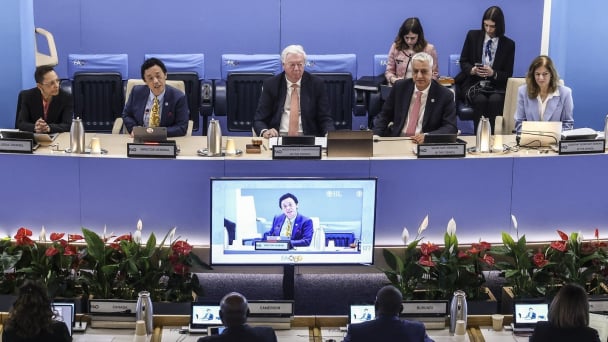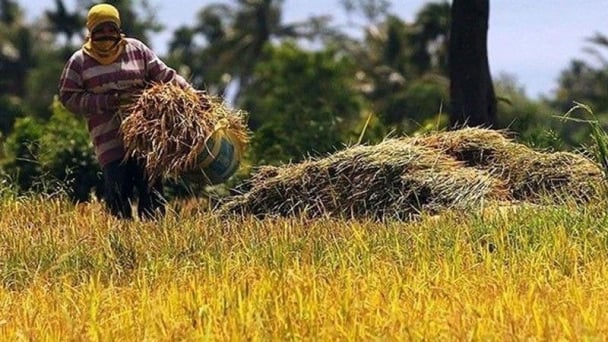April 14, 2025 | 01:24 GMT +7
April 14, 2025 | 01:24 GMT +7
Hotline: 0913.378.918
April 14, 2025 | 01:24 GMT +7
Hotline: 0913.378.918

Deputy Minister Nguyen Quoc Tri: "Elephants are considered indicators of the forest ecosystem". Photo: Bao Thang.
On the afternoon of November 20, the Ministry of Agriculture and Rural Development announced the Vietnam Elephant Conservation Action Plan Toward 2035, vision 2050 (VECAP 2022). This resulted from cooperation between the Department of Forestry and the Humane Society International (HSI) since 2019.
VECAP 2022 sets out 33 solutions for wild elephants and 21 actions for captive elephants, aiming to conserve and increase the number of elephants in Vietnam while promoting harmonious coexistence between elephants and human communities.
Long-term goals include expanding the system of protected areas, strengthening anti-poaching measures, developing ecotourism, supporting conservation, and promoting the local economy, creating a solid foundation for implementing the plan.
Tran Quang Bao, Director of the Department of Forestry, said wild elephants have four specific goals. These are: Conserving and restoring elephant populations, reducing threats, and improving the legal framework; Ensuring and improving the living environment by maintaining and improving the quality of habitats, preventing encroachment and fragmentation of elephant habitats; Effectively managing conflicts between elephants and humans based on improving the livelihoods of relevant communities; Improving capacity and cooperation mechanisms for elephant conservation.

The announcement ceremony of the elephant conservation plan attracted the attention of many international organizations and localities. Photo: Bao Thang.
Cindy Dent, Vice President of HSI Country Offices, hopes the newly issued elephant conservation plan will set new milestones in protecting endangered elephants.
HSI also highly appreciates the efforts of the Vietnamese Government and the Ministry of Agriculture and Rural Development and commits to supporting the implementation of VECAP 2022 towards harmonious coexistence between wild elephants and humans in Vietnam.
In the immediate future, the Species Conservation Subcommittee of the International Union for Conservation of Nature (IUCN) has supported two guidelines for conserving giant mammals. The IUCN representative also said that, with social resources and support from international organizations, captive elephants would have their specific ages determined, ensuring their living habits and moving toward reproductive ability.
From a population of 2,000 in the 1980s, the Asian elephant population in Vietnam has declined to an alarming level of less than 200. In response to this situation, in 1996, 2006, 2012, 2013, and 2022, Vietnam issued one ministerial-level action program and three government-level plans and projects to conserve elephants.

Elephants at Yok Don National Park, Dak Lak province. Photo: Tung Dinh.
In particular, in 2019, a pilot program for elephant conservation in the direction of harmonious coexistence was implemented in Dong Nai province, with three initiatives: “Monitoring elephants with camera traps,” “Monitoring human-elephant conflicts,” and “Managing elephant habitats and habitats.”
The scientific approach of these initiatives helped to accurately identify 27 individuals with a clear herd structure, allowing for a better understanding of the movement trends of the herd and the level, frequency, or causes of human-elephant conflicts.
Considering the largest terrestrial animal as an “important indicator” of the forest ecosystem, Deputy Minister of Agriculture and Rural Development Nguyen Quoc Tri acknowledged that the existence of elephants is an essential condition for protecting biodiversity and other coexisting species.
The selected list of activities has undergone a technical consultation process and received input from many stakeholders, including managers, enforcement agencies, international organizations, non-governmental organizations, research institutes, domestic and foreign scientists, and communities in elephant-inhabited areas.
"Elephant conservation has many meanings. It is both a manifestation of biodiversity and a metaphor for the strength of the Vietnamese people," said Deputy Minister Nguyen Quoc Tri. He also pledged to implement the conservation plan synchronously and effectively in five localities with large elephant populations across the country while upholding the spirit of "What said is done, what is committed is implemented, what is implemented is effective."

In the wild, elephants need large living spaces, up to 10 - 20km. Photo: Y Siem.
In the coming time, the Ministry of Agriculture and Rural Development will study policy mechanisms to promote the participation of local community groups in elephant conservation, as well as develop and implement technical guidance documents, such as monitoring elephants with camera traps, monitoring human-elephant conflicts, surveying elephant distribution areas in the form of grids, safety principles when encountering elephants, etc.
Integrating elephant content into strategies, planning, plans, programs, and projects for socio-economic development in the direction of sustainable development. Coordinate with localities to propagate and educate people to raise awareness about elephant conservation.
The Deputy Minister also called for the support of localities and, at the same time, reminded provinces with elephants that they are not all implementing the Ministry of Agriculture and Rural Development plan but are acting for the locality's future.
Translated by Huong Giang

(VAN) The latest Business Benchmark on Farm Animal Welfare (BBFAW) reveals steady progress on farm animal welfare across the global food industry.

(VAN) Green credit is a financial policy that effectively supports environmentally friendly projects and activities today.
/2025/04/09/1049-2-165919_630.jpg)
(VAN) With a revenue of less than VND 30 billion/year, packaging producers are exempted from EPR liability under Decree No. 05/2025 newly issued.

(VAN) Ministry of Agriculture and Environment has issued an Action Plan for sector's development in the coming period, aiming for a growth rate of 4% or higher and an export turnover of USD 65 billion.

(VAN) The 177th Session of the FAO Council opened on Monday at the Organization’s headquarters in Rome.

(VAN) In a statement, the Federation of Free Farmers (FFF) said the government must not be complacent over the reciprocal tariffs even if the Philippines will be slapped with the second lowest rate among US trade partners.

(VAN) On the morning of April 3, Prime Minister Pham Minh Chinh chaired a meeting with ministries following the United States' announcement of new tariff rates on imports from Vietnam.